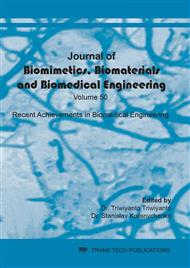p.25
p.39
p.51
p.59
p.73
p.89
p.103
p.113
p.123
The Effectiveness Obstructive Sleep Apnea Monitoring Using Telemedicine Smartphone System (TmSS)
Abstract:
Data at the world health organization shows that around more than 100 million people worldwide suffer from Obstructive Sleep Apnea (OSA) and most sufferers go undetected. The purpose of this study is to develop an apnea monitor that can detect the symptoms of Obstructive Sleep Apnea using the Telemedicine Smartphone System (TmSS). The contribution of this study is the generation of telemedicine systems in sleep apnea monitoring devices. So that the monitoring tools can be effective and efficient when used, then the Obstructive Sleep Apnea monitoring tool is made with the TmSS system that can transmit data values wirelessly and in real-time. This tool uses a flex sensor to detect patient breathing. The output generated by the sensor is then conditioned on an analog signal conditioner (PSA) circuit. The signal output from the PSA is processed on the ATMega 328 microcontroller to get the respiration value which is then sent via Bluetooth HC-05 and displayed on an android smartphone device which will also display a warning notification in the event of stopping breathing (apnea). Based on the results of the measurement of respiration values compared with standard equipment produces the highest error value of 6.98% and the lowest of 0.00%. The tool can send data respiration values using the TmSS system properly. This tool can be implemented to detect the symptoms of Obstructive Sleep Apnea.
Info:
Periodical:
Pages:
113-121
Citation:
Online since:
April 2021
Keywords:
Price:
Сopyright:
© 2021 Trans Tech Publications Ltd. All Rights Reserved
Share:
Citation:


